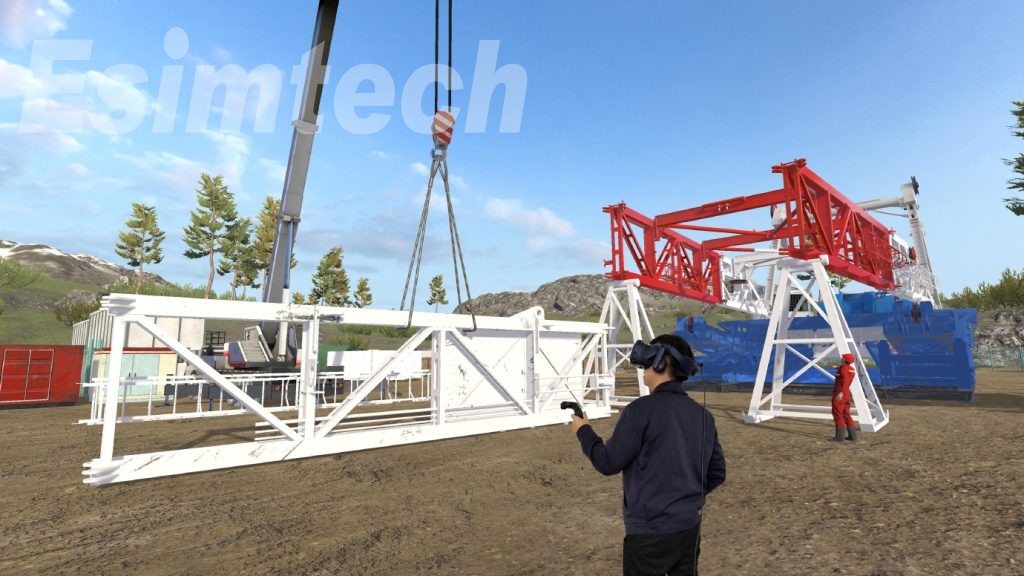Why using Land Rig Installation Simulators: Significance and Advantages
The intricate and multifaceted nature of land rigs is crucial for oil and gas production from onshore fields. Setting up these rigs demands complex operations and a profound understanding of the processes involved. To address these challenges, the introduction of land rig installation simulator has ushered in a new era of training that focuses on safety, efficiency, and practical knowledge. This article delves into the significance and advantages of using land rig installation simulators.

The Significance of Land Rig Installation Simulators:
Historically, manual labor, hands-on training, and practical experience were the cornerstones of land rig installation training. However, this approach posed challenges such as steep learning curves, safety hazards during training, and the potential for installation errors or delays. Enter the land rig installation simulator, a virtual environment that replicates actual installation procedures. This simulator revolutionizes training by offering a risk-free space for learning, optimization, and improved safety.
Functionality of the Land Rig Installation Simulator:
Powered by advanced technology, the simulator employs computer-based training and simulation programs to replicate the intricate processes involved in setting up a land rig. Utilizing sophisticated 3D modeling, physics-based algorithms, and real-time simulations. The land rig installation simulator provides an immersive experience. It factors in equipment specifications, environmental conditions, and operational constraints to create a lifelike virtual representation of the installation process.

Advantages of Using the Land Rig Installation Simulator:
Elevating Safety and Efficiency:
The primary objective of the land rig installation simulator is to enhance safety and efficiency during rig setup. Traditional on-site training can be risky for both workers and equipment. With the simulator, trainees can practice various scenarios in a controlled environment, reducing the potential for accidents and downtime.
Realistic Simulation Environment:
The simulator faithfully recreates the complex conditions encountered during land rig installation. Trainees navigate through each phase with remarkable accuracy, from initial site preparation to mast assembly, drill pipe insertion, and substructure construction. The simulated environment replicates diverse weather patterns, topographical challenges, and operational complexities akin to real-world scenarios.
Comprehensive Training Modules:
The land rig installation simulator offers an array of training courses covering all aspects of rig installation. Trainees can familiarize themselves with tools, learn safety protocols, troubleshoot common issues, and acquire the expertise required for successful installations. This practical experience equips trainees without subjecting them to real-world risks, ensuring their preparedness for challenges.
Real-Time Feedback and Assessment:
The simulator's real-time feedback and evaluation capabilities are instrumental. Immediate guidance and performance evaluations empower trainees to identify weaknesses and refine their techniques. This feedback-driven approach nurtures a culture of continuous learning, enabling individuals to track their progress and strive for excellence in rig installation practices.
Cost-Effective Training Solution:
Integrating the land rig installation simulator as a training tool yields significant cost-saving benefits. It eliminates the need for costly on-site training exercises that demand specialized equipment, travel expenses, and prolonged downtime. By delivering a realistic and immersive experience, the simulator accelerates trainee proficiency, optimizing resource utilization and operational efficiency.
Reducing Environmental Impact:
In addition to financial and safety benefits, the land rig installation simulator contributes to reducing environmental impact. Conventional training methods can result in substantial fuel consumption, greenhouse gas emissions, and potential land and water contamination. The simulator allows in-depth training without these environmental costs, promoting sustainability within the industry.
Conclusion:
The advent of land rig installation simulators marks a transformative advancement in training methodologies. This technology offers a secure, lifelike, and immersive learning environment for mastering crucial skills, negating the risks associated with traditional on-site training. By enhancing safety, efficiency, and environmental responsibility, these simulators are reshaping the landscape of land rig installation training in the oil and gas industry.
